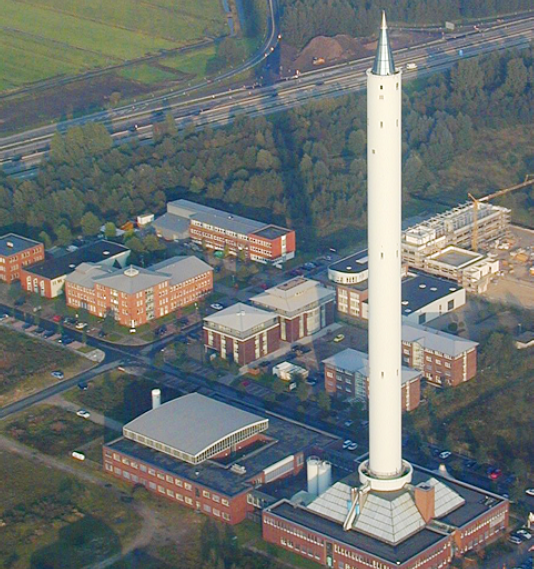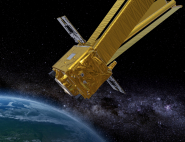Drop towers (1987-2001)
The Tower of Pisa experiment conducted inside drop towers in a vacuum
On Earth, to “seek what would happen to falling bodies of very different weights in a medium completely devoid of resistance”, as Galileo advocated, we can conceive long vertical tubes in which we create a vacuum. In such so-called drop towers (or drop tubes), a body’s acceleration is due only to gravity.
Thus, for a given tower height h, the free-fall duration is (2h/g)(1/2), where g is the acceleration due to gravity, approximately 9.8 metres per second squared. A simple numerical calculation shows that for a 110-metre tower, the free-fall duration is 4.74 seconds. This is precisely the height of the drop tower at the University of Bremen, Germany (photo right).
This facility supported by the European Space Agency (ESA) enables satellites to be tested in microgravity conditions. In practice, when testing the universality of free fall we do not release two masses side by side as Galileo imagined; rather, two hollow cylindrical proof masses are dropped one inside the other. This ensures that their centres of gravity match each other as closely as possible when they are dropped. The relative position of the masses is measured using highly precise instruments. If one of them reaches the floor of the tower before the other, then the universality of free fall is not verified.
Such experiments tested the universality of free fall with a relative accuracy of 10-10 in 1987. The free-fall duration limits this degree of accuracy. The duration can be doubled to about 10 seconds, but no longer, by catapulting a capsule from the bottom of the tower. However, by optimizing all possible disturbances, one of the main ones being the relative position of the centres of mass of the bodies to be timed, and by repeating the experiment several times—as Galileo suggested over shorter distances—physicists hope to accumulate sufficient free-fall time to achieve ever more precise measurements.


